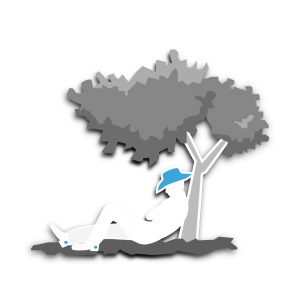To say we’re in a time of unprecedented change and stress doesn’t do it justice. This Covid-19 coronavirus pandemic is causing seismic shifts around the world. Panic of this invisible killer is added to fear of not being able to stay in business. Many leaders experience sleepless nights at times. But wrestling with uncertain cashflow, planning for a future that changes every day, and needing to consider all options, including layoffs, is giving some leaders a close case of insomnia.
Worst still, despite facing the same information, the people you lead are responding in vastly different ways.
There are no easy answers for moving through this. But there are tools to help. Especially in explaining how you and the people around you process stress.
3 Approaches Leaders Take
We would likely agree in theory that people deal with stress differently. But when we’re leading in stressful times, we tend to double down on our own approach. Brain specialists tell us that fear causes cortisol to flood the brain. A benefit is that cortisol narrows our focus. In brief spurts, this can help us focus on what matters. In times of chronic stress, this restrictive vision ends up causing us to miss opportunities, putting our teams in further peril.
Neo-Freudian psychologist Karen Horny posited that the ways people coped with life could be classified in three broad categories. Modern teachers like Suzanne Stabile call these three instinctual approaches, or “stances”: aggressive, dependent, and withdrawn.
Aggressive Stance
 There are some people who just seem to be always on the go. They’re fast paced and able to take action. They are probably in the “aggressive stance” category.
There are some people who just seem to be always on the go. They’re fast paced and able to take action. They are probably in the “aggressive stance” category.
To these assertive people, since the future hasn’t happened yet, they can create the future by taking action. They tend to remove themselves from others, independently doing whatever they see needs to get done. Out of touch with their feelings, they tend to see all problems as being “out there” or somebody else’s fault. So they don’t feel a need to indulge in self-criticism. They just keep taking action, trying to act themselves out of the crisis.
Others can see these leaders as either incredibly inspiring providers of clarity or callous and cold-hearted people not caring about the people around them.
You may be an aggressive stance person if you’re looking at how everyone is stressing out and wondering, “Why don’t they just DO something?!”
Dependent Stance
 Other people are much more aware of the here-and-now. These present-focused people are dutifully constantly processing the reactions of the people around them. While they instinctually process feelings quickly, they need more time for thinking.
Other people are much more aware of the here-and-now. These present-focused people are dutifully constantly processing the reactions of the people around them. While they instinctually process feelings quickly, they need more time for thinking.
In normal times, they are constantly looking to others for solutions. In stress, those in the dependent stance internalize problems, assuming the problem is always their fault. Since they already believe someone else has the right answer, they double down on trying to find the people with the specific answers to get them through this present crisis.
Others can see these leaders as caring or frustratingly second-guessing everything and never moving forward.
You may be a dependent stance person if you’re looking at how everyone is stressing out and wondering, “Why don’t they check in with the people around them?!”
Withdrawn Stance
 A third set of people go through life with a tendency to turn inward. Naturally skilled at observing, they can confuse observation with action. When they do act, they tend to lean back on their role and what people in that role are supposed to do.
A third set of people go through life with a tendency to turn inward. Naturally skilled at observing, they can confuse observation with action. When they do act, they tend to lean back on their role and what people in that role are supposed to do.
Withdrawing people move away from others is to be alone to work on problems. They believe they can’t move until they have determined the perfect plan. They can see all the things going on around them, but they don’t know how to determine which is most important. And most don’t truly believe their presence will really make a difference.
This gets intensified in stress as they have no way of creating a perfect solution but never find one. And their natural instinct to inaction grows.
To others, these leaders could seem refreshingly thoughtful or frustratingly aloof and passive-aggressive.
You may be a withdrawing stance person if you’re looking at how everyone is stressing out and wondering, “Why aren’t they taking time to think this through?!”
Working through the Stress
In any time of crisis, we need all three approaches – reflection, connection with others, and bold action. The situations around us are stressful and will continue to be. Stressful enough even without the stress caused by the radical different responses of these three orientations.
Here are some ideas of what you can do:
- If you orient to life from the aggressive stance, you may work more effectively through this stressful time paradoxically by slowing down. Even getting in touch with feelings. You’ll probably want to do this away from others first but with a trusted friend or coach. Remember, slowing down isn’t weakness. It can even help you be more efficient. As Stephen Covey used to say, “To go fast with people, go slow.” And it takes strength to be vulnerable.If you work with aggressives, it’ll help remember how they see the word. For example, the possible consequences of their actions don’t tend to motivate them. Probably because those consequences are also in the future so they believe they can change themYou can help influence them by showing how what you’re going to share will effect change by restructuring the world.
- If the dependent stance makes sense with how you orient to life, you’re predisposed to feeling more anxiety than the other stances. But your instinctual drive to seek answers outside yourself can only make that worse. To improve your leadership, you’ll want to get clear on what you want rather than focusing exclusively on what everyone else wants. It will be hard but you’ll lead better as you begin trusting that doing what you want isn’t necessarily going to harm people around you.If you work with someone in this stance, it doesn’t help to ask them what they are thinking. They tend to not know what they’re thinking. But since they are really want to find temperate solutions to life’s difficulties, you can show them how your ideas avoid extremes. And how it accounts for reactions others may have.
- If you resonate with the withdrawn stance, you’ll be able to lead more effectively by getting in touch with actually doing things. Enneagram teacher Chris Heurtz suggests getting more in your body and practicing taking action on things that matter to you. While this will take time to grow into, some find lists to be very helpful.If you work with people in the withdrawn stance, you’ll likely want to chase after them when they start retreating. You’ll want to pull them into a meeting or a virtual chat. But they actually do need some space. So avoiding surprises or interruptions can be very helpful. Remember, they want solutions that seem “unassailable.” So show them how your ideas are tested and as proven as possible.
We will get through this crisis. Until we do, we’ll have to make some tough and even gut-wrenching decisions. But knowing these three tendencies can help you non-judgmentally discover your own habitual orientation. And it can help you lead others who process stress differently than you do.

0 Comments